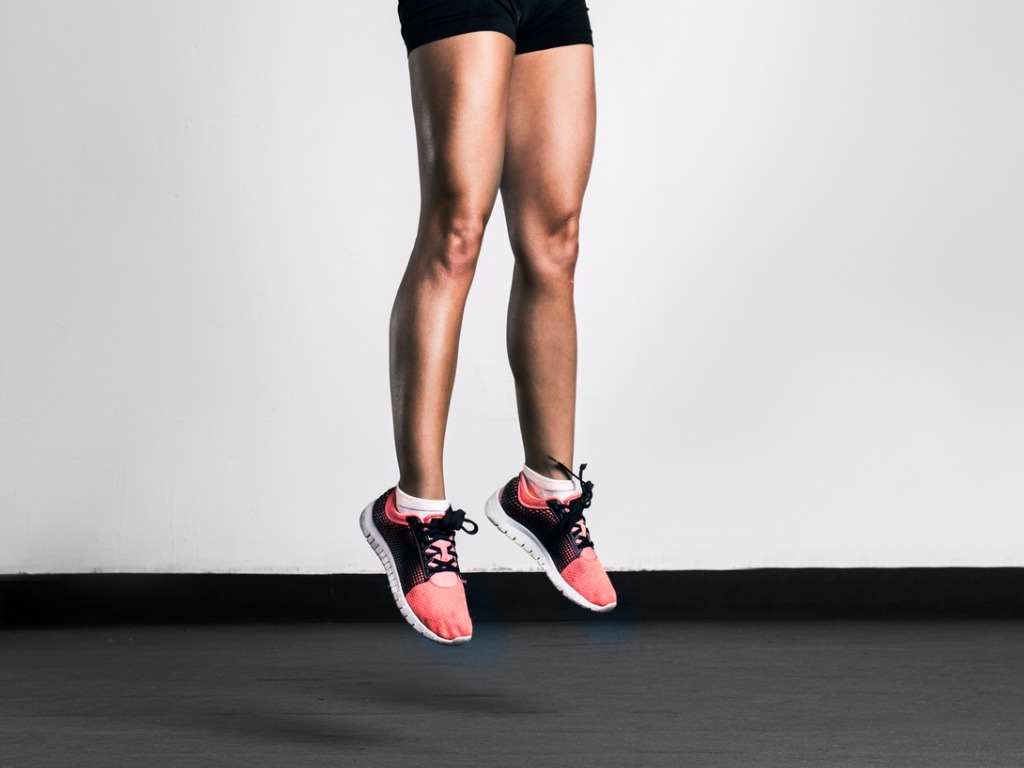Détente verticale
Approche individualisée de l’entraînement basée sur le profil force-vitesse
Mots-clés :
détente verticale, entraînement physique, profil force-vitesse-puissance, individualisation de l'entraînement, mesureRésumé
Action essentielle dans de nombreux sports, le saut requiert des qualités physiques très particulières, mélange de force, de vitesse et de puissance. Toutefois, développer ces qualités ne s’improvise pas et nécessite une réflexion adaptée à la biomécanique de chaque athlète. Car si tout le monde peut sauter, chacun le fait avec sa propre technique, et ses propres qualités physiques.
Références
Alcazar J, Csapo R, Ara I et Alegre LM, « On the shape of the force-velocity relationship in skeletal muscles: The linear, the hyperbolic, and the double-hyperbolic », Front Physiol, 2019, 10. https://doi.org/10.3389/fphys.2019.00769.
Balsalobre-Fernández C, Glaister M et Lockey RA, « The validity and reliability of an iPhone app for measuring vertical jump performance », J Sports Sci, 2015, 33(15), p. 1574-1579. https://doi.org/10.1080/02640414.2014.996184.
Escobar Álvarez JA, Fuentes Garciá JP, Da Conceição FA et Jiménez-Reyes P, « Individualized training based on force-velocity porfiling during jumping in ballet dancers », Int J Sports Physiol Perform, 2019, 7, p. 1-7. https://doi.org/10.1123/ijspp.2019-0492.
García-Ramos A, Pérez-Castilla A, Morales-Artacho AJ, Almeida F, Padial P, Bonitch-Góngora J, de la Fuente B et Feriche B, « Force-velocity relationship in the countermovement jump exercise assessed by different measurement methods », J Hum Kinet, 2019, 67(1), p. 37-47. https://doi.org/10.2478/hukin-2018-0085.
García-Ramos A, Pérez-Castilla A et Jaric S, « Optimisation of applied loads when using the two-point method for assessing the force-velocity relationship during vertical jumps », Sports Biomech, 2018, p. 1-16. https://doi.org/10.1080/14763141.2018.1545044.
Giroux C, Rabita G, Chollet D et Guilhem G, « What is the best method for assessing lower limb force-velocity relationship? », Int J Sports Med, 2015, 36(2), p. 143-149. https://doi.org/10.1055/s-0034-1385886.
Jiménez-Reyes P, Samozino P et Morin JB, « Optimized training for jumping performance using the force-velocity imbalance: Individual adaptation kinetics », PLoS One, 2019, 14(5), p. e0216681. https://doi.org/10.1371/journal.pone.0216681.
Jiménez-Reyes P, Samozino P, García-Ramos A, Cuadrado-Peñafiel V, Brughelli M et Morin JB, « Relationship between vertical and horizontal force-velocity-power profiles in various sports and levels of practice », PeerJ, 2018, 6, p. e5937. https://doi.org/10.7717/peerj.5937.
Jiménez-Reyes P, Samozino P, Pareja-Blanco F, Conceição F, Cuadrado-Peñafiel V, González-Badillo JJ et Morin JB, « Validity of a simple method for measuring force-velocity-power profile in countermovement jump », Int J Sport Physiol Perform, 2017a, 12(1), p. 36-43. https://doi.org/10.1123/ijspp.2015-0484.
Jiménez-Reyes P, Samozino P, Brughelli M et Morin JB, « Effectiveness of an individualized training based on force-velocity profiling during jumping », Front Physiol, 2017b, 7, p. 677. https://doi.org/10.3389/fphys.2016.00677.
Jiménez-Reyes P, Samozino P, Cuadrado-Peñafiel V, Conceição F, González-Badillo JJ et Morin JB, « Effect of countermovement on power-force-velocity profile », Eur J Appl Physiol, 2014, 114(11), p. 2281-2288. https://doi.org/10.1007/s00421-014-2947-1.
Marey EJ, Le Mouvement, Éditions Jacqueline Chambon, Arles, 2002.
Martin JA, Brandon SCE, Keuler EM, Hermus JR, Ehlers AC, Segalman DJ, Allen MSet Thelen DG, « Gauging force by tapping tendons », Nat Commun, 2018, 9(1592). https://doi.org/10.1038/s41467-018-03797.
Morin JB et Samozino P, Biomechanics of Training and Testing: Innovative Concepts and Simple Field Methods, Springer International Publishing, Champaign, 2018.
Morin JB et Samozino P, « Interpreting power-force-velocity profiles for individualized and specific training », Int J Sports Physiol Perform, 2016, 11(2), p. 267-272. https://doi.org/10.1123/ijspp.2015.0638.
Morin JB, Jiménez-Reyes P, Brughelli M et Samozino P, « When jump height is not a good indicator of lower limb maximal power output: Theoretical demonstration, experimental evidence and practical solutions », Sports Med, 2019, 49(7), p. 999-1006. https://doi.org/10.1007/s40279-019-01073-1.
Palmieri G, Callegari M et Fioretti S, « Analytical and multibody modeling for the power analysis of standing jumps », Comput Methods Biomech Biomed Engin, 2015, 18(14), p. 1564-1573. https://doi.org/10.1080/10255842.2014.930135.
Rahmani A, Samozino P, Morin JB et Morel B, « A simple method for assessing upper-limb force-velocity profile in bench press », Int J Sports Physiol Perform, 2018, 13(2), p. 200-207. https://doi.org/10.1123/ijspp.2016-0814.
Samozino P, Rivière JR, Rossi J, Morin JB et Jiménez-Reyes P, « How fast is a horizontal squat jump? », Int J Sports Physiol Perform, 2018, 13(7), p. 910-916. https://doi.org/10.1123/ijspp.2017-0499.
Samozino P, Edouard P, Sangnier S, Brughelli M, Gimenez P et Morin JB, « Force-velocity profile: Imbalance determination and effect on lower limb ballistic performance », Int J Sport Med, 2014, 35(6), p. 505-510. https://doi.org/10.1055/s-0033-1354382.
Samozino P, Rejc E, Di Prampero PE, Belli A et Morin JB, « Optimal force-velocity profile in ballistic movements. Altius: Citius or Fortius? », Med Sci Sports Exerc, 2012, 44(2), p. 313-322. https://doi.org/10.1249/MSS.0b013e31822d757a.
Samozino P, Morin JB, Hintzy F et Belli A, « Jumping ability: A theoretical integrative approach », J Theor Biol, 2010, 264(1), p. 11-18. https://doi.org/10.1016/j.jtbi.2010.01.021.
Samozino P, Morin JB, Hintzy F et Belli A, « A simple method for measuring force, velocity and power output during squat jump », J Biomech, 2008, 41(14), p. 2940-2945. https://doi.org/10.1016/j.biomech.2008.07.028.

Téléchargements
Publiée
Licence
(c) Copyright Jean-Benoît Morin, Pierre Samozino (Auteur) 2024

Ce travail est disponible sous licence Creative Commons Attribution - Pas d'Utilisation Commerciale - Pas de Modification 4.0 International.

